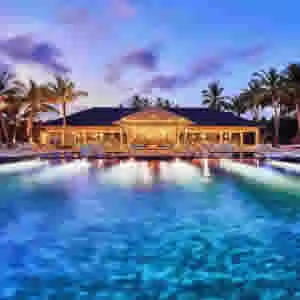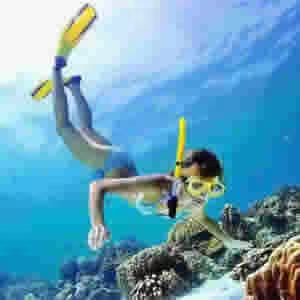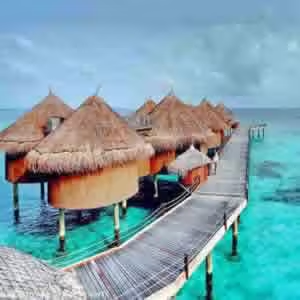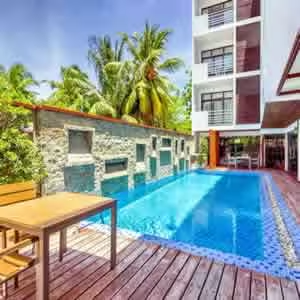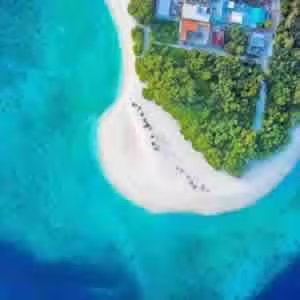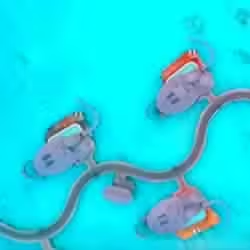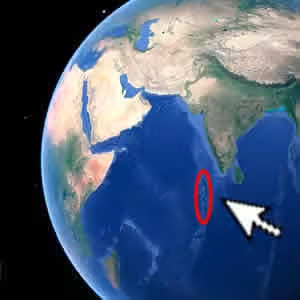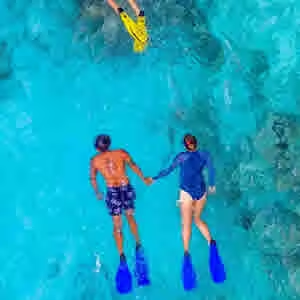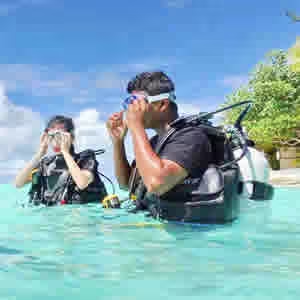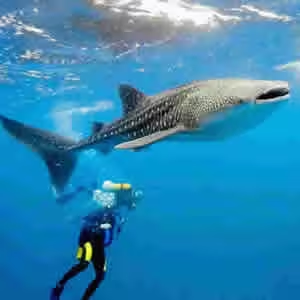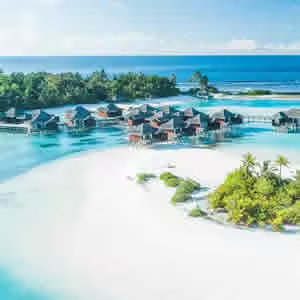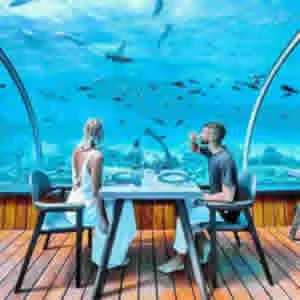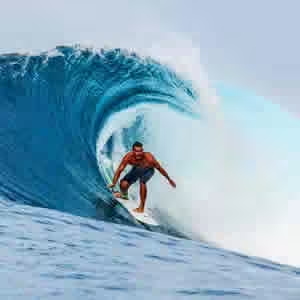Diving in Baa Atoll
Maldives Scuba Diving Guide
August, 2019
Baa Atoll, declared a UNESCO Biosphere Reserve, is probably one of the best location to dive with manta rays and whale sharks in the Maldives. Scuba diving the Maldives' Baa Atoll is to scuba dive in one of the greatest biospheres on Earth. Known for its rare biodiversity in its coral reefs and marine life, Baa Atoll is one of the most unique atolls in the world where the world famous Hanifaru Bay is a protected marine area and a great Manta spot which can be seen in huge numbers during the season. However the atoll also offers plenty of other dive experiences with beautiful reefs marked by swim-throughs, caves and overhangs, and current-swept thilas packed with abundant marine life. Scuba diving in Baa Atoll is designed from beginners to advanced divers.
Easily accessible (20 minute domestic flight from Malé airport to the island of Dharavandhoo) or a 35-minute seaplane direct to your resort island, during low season you can find good deals in the atoll's luxury resorts. Local ferries are also an option for budget-conscious travellers. The most common methods of the atoll's transfers are smaller island hopping rides or speed boat, but the best way to scuba dive Baa Atoll is liveaboard. If traveling to the islands to experience Maldives scuba diving, your liveaboard or chosen resort may have a plan of arrival already set for you, so always check.
Baa Atoll is located in the northern region of the Maldives. It consists of three separate natural atolls, namely Maalhosmadulu Atoll, Fasduthere Atoll and the Goifulhafehendhu Atoll and a total of 75 islands, out of which only 13 are inhabited. The smaller Goidu Atoll, in which only the three Goidu, Fulhadhoo and Fehendhoo islands are located, is separated from the main administrative atoll, which is located south of the Raa atoll. Baa was awarded the status of UNESCO World Biosphere Reserve in 2011 due to the diversity of its marine biodiversity, especially around Hanifaru Bay. The fish-rich waters of the atoll have all the conditions for the good dives, which is specific here and differs significantly from other atolls of the Maldives archipelago.
Since the atoll has a fairly large external reef wall, a unique feature is that the western side of this wall faces the open sea, and this water area offers spectacular diving, given that manta rays flock here. The atoll's surroundings are rich with all sizes and forms of marine life, and the underwater gardens of coral reefs are literally teeming with the fish life, especially in places rarely visited by divers.
While only thirteen of its seventy-five islands are inhabited, the atoll is well developed for tourism, and it is a popular destination for an unforgettable liveaboard routes. Baa Atoll might be most famous for Hanifaru Bay (local name Vandhumaafaru Adi). This area does not even allow diving, but Baa Atoll liveaboards will be sure to visit it from May through December for an incomparable snorkeling: huge aggregations of both manta rays and whale sharks going wild in a plankton-eating frenzy that is perhaps more high-energy than anywhere else in the world. As a World Biosphere Reserve, Hanifaru Bay is an unparalleled draw for marine life enthusiasts, professional photographers, and researchers. Only sixty people are allowed in the bay at one time to see the rollicking, rolling behavior that the bayís abundance of food brings out in these normally sedate giants of the sea.
If you are planning your budget diving holiday, you will find cheap accomodation and scuba diving at affordable prices on the following inhabited islands: Dharavandhoo, Maalhos
Best Time
The Maldives and Baa Atoll are great for scuba diving year round but the recommended months for certified divers are from December to May from June to October, when the seas are the calmest. Maldives has sunny weather almost all throughout the year, except for the monsoon rains; although it does not rain continuously for long periods of time. The wet season of May to August brings a period of decreased visibility, however the tropical climate, fewer tourists and increased whale shark and manta sightings can make scuba diving at this time more desirable. It is ideal conditions for a warm water dive into the underwater realms.
Known as the Manta Capital of Maldives. Baa Atoll is home to large schools of Manta during the Manta Season between May and November. Dive in to witness their unique behavior at cleaning stations and during feeding time.Water temperatures tend to remain constant between 27 and 30 Degree Celsius.
Another factor in relation to diving is the water currents; which is quite predictable for any experienced diver or seafarer, in the Maldives drift diving can be an easy way to experience the vast and serene underwater environment of Maldives, as it allows to see more fish life and coral formations than could otherwise be seen. The Baa atoll has protected dive sites and locations and sea life, throughout the archipelago. Diving with consideration of these factors can be a life changing experience that is memorable.
The nearest decompression chamber is located at Kuramathi Resort.
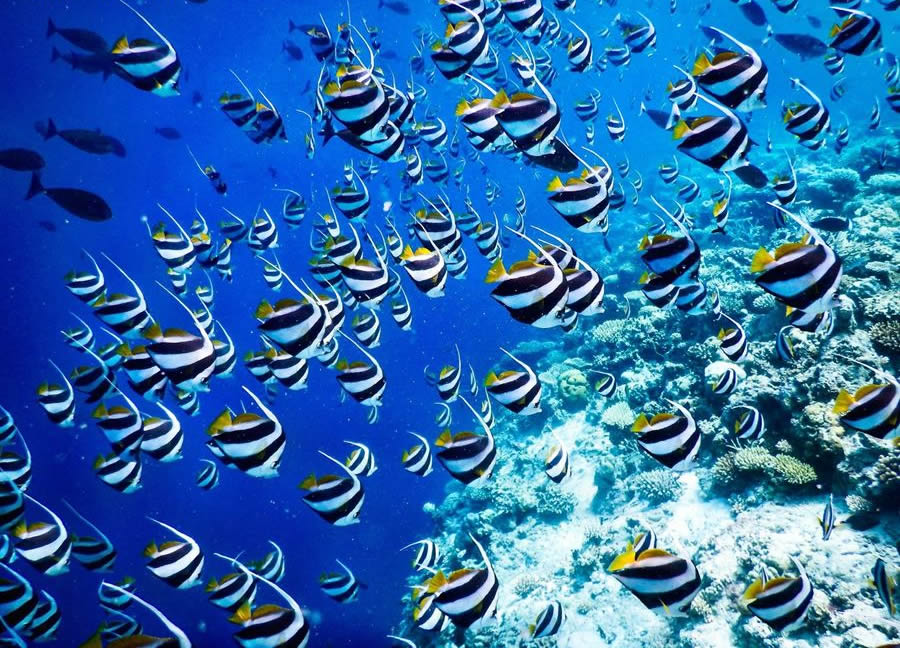
What to See
If you visit the atoll during the manta rays season, expect a fantastic feeding spectacle. As well as the famous Hanifaru Bay, Baa Atoll offers a wide variety of large fish schools. The region harbors significant biodiversity of reef animals, hard and soft corals, reef fish species, turtles, manta rays and any number of shark species. Hanifaru Bay is one of the few places on earth where whale sharks congregate to mate.
Several sites are known for their exciting topography with swim-throughs and overhangs packed with soldierfish and rabbitfish and the atoll also has some unique species, such as whip corals, crimson sponges, black coral bushes, pink hydrozoan corals, bryozoans and sea slugs that have only been recorded from Baa Atoll. The soft corals found in the overhangs are represented by blue, yellow and green colors; Small Maldivian sponges sit on the sandbanks, while at midnight you can find snappers, small-toothed emperors, lunar fusiliers and passing by. Coral cod is beautifully covered with fluorescent spots. A couple of porcelain crabs are hiding in an anemic coral. On the reefs you will also see large table-like corals.
Coral scapes with amazing underwater visibility, makes Baa Atoll a paradise for an underwater photographer. In the channels you will find eagles, napoleons, turtles, sharks and other pelagic life. Don't forget a waterproof camera or GoPro to capture your underwater experiences.
Liveaboard Diving in Baa Atoll
The length of most liveaboard itineraries in Baa Atoll ranges from 7 to 10 nights, with budgets from 200 to 400 euros per night. Many itineraries on a Baa Atoll-bound liveaboard include North Male and Ari Atoll. Some even venture as far south as Vaavu and Meemu. Other itineraries may spend all their time in the north, hopping between Baaís uncrowded neighbors Lhaviyani, Noonu, and Raa. Still other liveaboards venture even farther north to Haa Alifu or Haa Dhalu Atolls, the northernmost area of the Maldives. Liveaboards in Baa Atoll are mostly MV yachts and luxury yachts. Read More...
Best Dive Sites
Popular spots for watching whale sharks and manta rays can be full of snorkelers, but the Baa Atoll dive sites are well-chartered and offer a wealth of diving and marine life. CLICK FOR THE MAP
With over 60 dive sites, most spots in Baa is fully reachable in depth of 15 to 30 meters. Baa Atoll also has high numbers of Thila (underwater pinnacle/island) and house reefs. Stronger ocean currents are also rare as dives are done in the inner atoll waters. However, it is the famous thilas that makes Baa Atoll such a special dive destination. The majority of these are concentrated around the eastern tip of the atoll, providing easy access to the best of Baa.
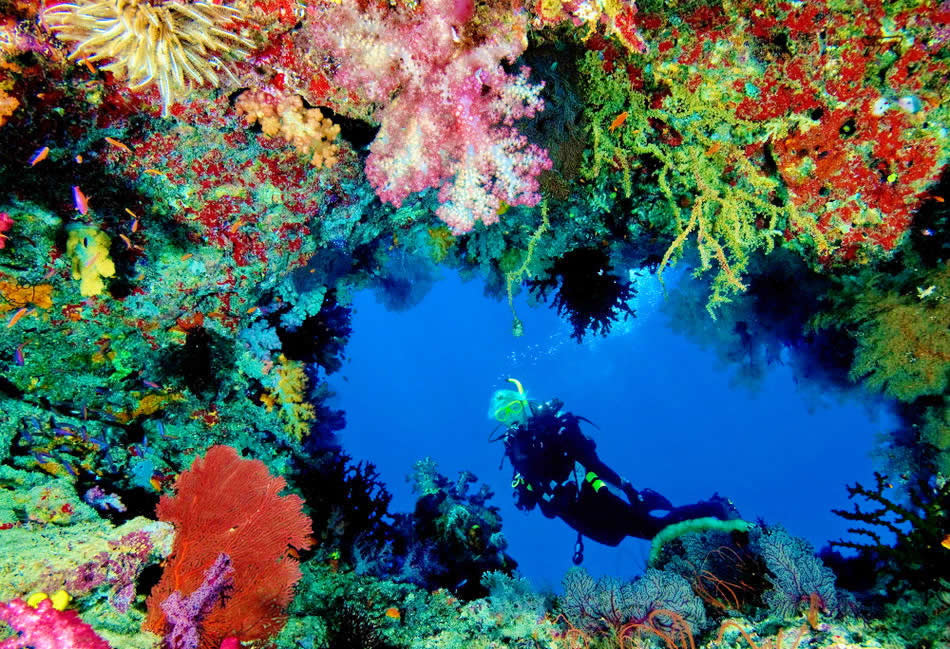
Hanifaru Bay
Baa Atoll has become most famous for Hanifaru Bay and the gathering of the Mantas as they push the plankton to become trapped in the bay, however, this site no longer allows scuba diving. The Bay of Hanifaru is a reliable meeting place for one of the largest populations of manta rays in the world, when up to 100 animals simultaneously accumulate in the vast lagoon. This is a special type of reef manta (Manta alfredi), which can often be found in neat lines, hovering one after another. Sometimes you can also watch their fantastic spinning dances. There are also frequent whale sharks (Rhincodon typus), which, like mantas, are attracted to plankton, which come to the bay during the south-west monsoon from May to November. As in most of the Indian Ocean, whale sharks here are usually small in size. The guests might be fortunate enough to see the feeding frenzy from boat deck or snorkeling off. We recommend bringing your own mask and fins for snorkeling and diving to ensure good fit and comfort. READ MORE
Dhonfanu Thila
Close to the famous Hanifaru Bay is Dhonfanu thila, a beautiful reef with interesting topography and a pinnacle that faces out into the prevailing currents. Dhonfanu is an oval-shaped reef starting from about 7 to 14 meters with a beautiful swim through at around 18 meters. The entire thila becomes a cleaning station during manta season and a canyon on the other side of the swim through reaches down to 25 meters where divers are greeted by flourishing marine life including grey reef sharks, eagle rays, barracudas and large schooling Jacks. Schooling fusiliers and snappers, long nose hawkfish, angelfish and nudibraches along with the prolific marine life at the current point, can make for some beautiful dives.
Dhigali Haa (Dhigali Thila)
One of the Maldives’ top dive sites and a part of a marine protected are is Dhigali Haa, a long, narrow reef characterized by a colourful shallows with brights red encrusting coralline algae and healthy stands of branching Acropora corals. Photographer's favourite, Dhigali Haa is not famous for mantas, but it also hosts great fish biomass. This wonderful reef is a great site for spotting a great soft coral, frogfish, fusiliers, sponges, shrimps and crabs, napoleons and barracudas and turtles, as well as schools of tiny silvery fish and jacks dance out their predator-prey drama along the sides of the pinnacle, slower-moving reef fish stand sentinel in the sheltered areas, and colorful reef-flat inhabitants play in the pinnacleís shallows. Whip corals, bushy black corals, and other photogenic benthic life give additional diversity to the site.
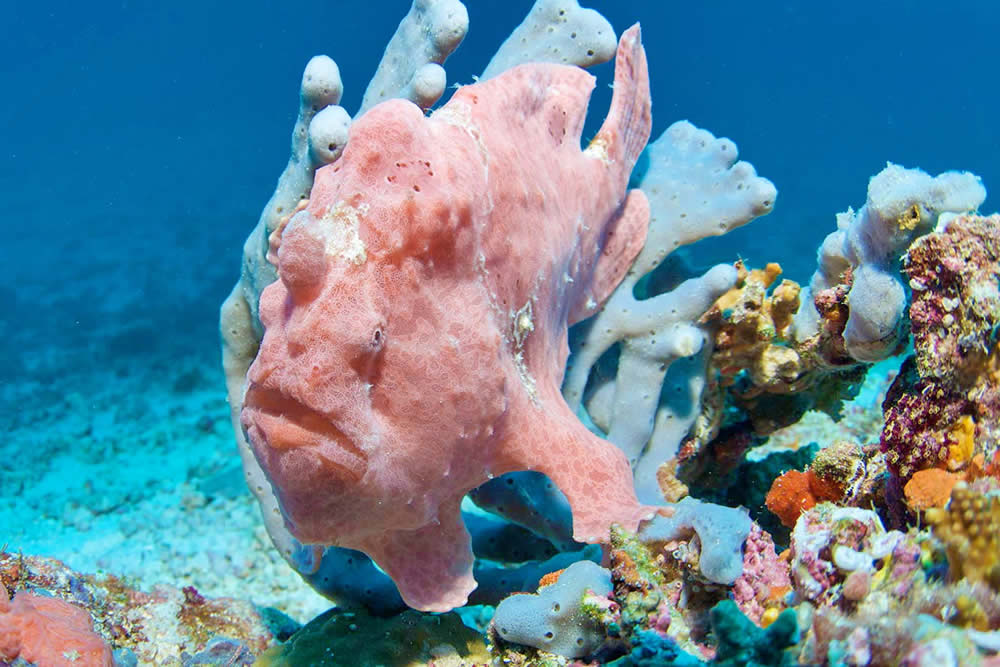
Dharavandhoo Thila
A narrow curved thila connected to the main reef of the inhabited island of Dharavandhoo. Its location makes this dive one of the easier ones, because the shelter offered by the main reef gives you the possibility to dive it in all conditions. Just as Dhonfanu Thila, also Dharavandhoo Thila is divided into two parts. The side facing the outside of the atoll is a sandy area full of garden eels, various different gobbies and their partner shrimps, working all day long to keep the entrances of their holes 'sand-free'. Often you can see very big groupers and napoleons roaming the area. The top reef is home of many scorpion fish, sweet lip, blue striped snappers, it makes it a perfect area to spend your safety stop. Manta rays find several cleaning stations in the wet season. The other part of the thila, facing the inside of the atoll, is full of magnificent overhangs, populated by vibrant sea fans and hundreds of cleaner fish, shrimps and other critters such as moray eels, lion- and scorpion fish and countless anthias creating a brightly coloured seascape
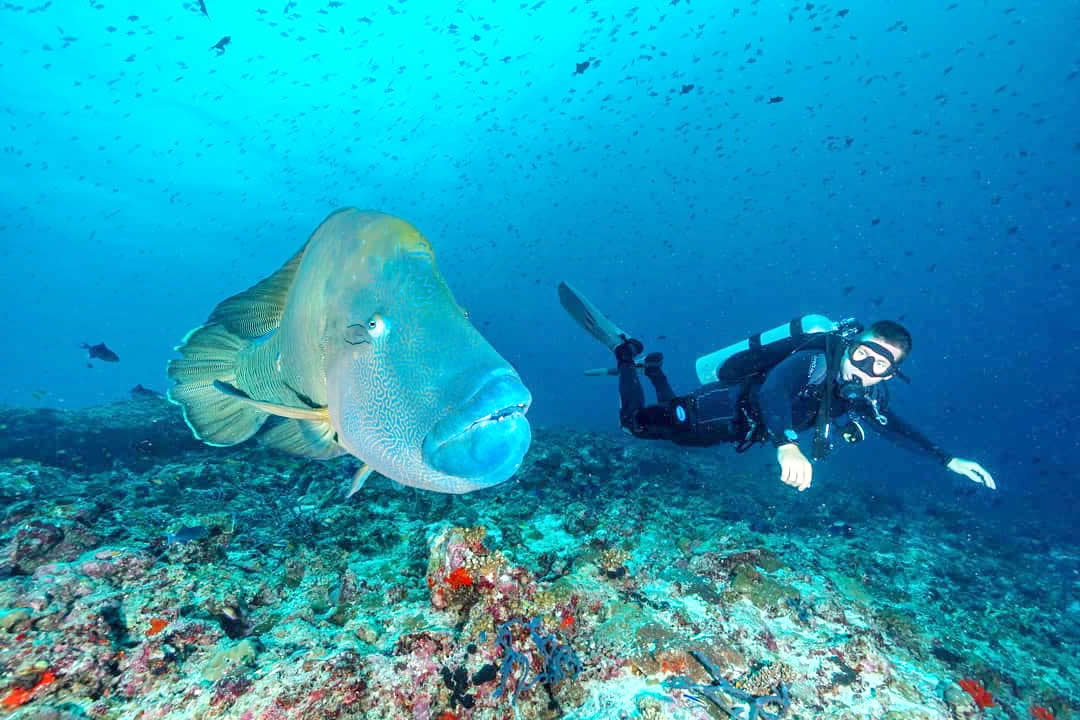
Аnga Faru
Another popular Baa Atoll diving spot considered a conservation area is the unique Anga Faru, the birthplace of gray reef sharks, also known as the “aquarium”. Here, dozens of gray sharks will hover past you, under the supervision of two-meter nurse sharks. Here you can also find schools of snappers, tuna and sometimes eagles. The shark season begins in mid-January and ends in March.
The nearby dive site, called Anga Thila, is drift diving through five underwater hills at depths of 25-30 meters. Exciting drifting is designed for experienced divers. Both dive sites are striking in their beauty, amazing in complexity, and with good skills they end in shark paintings.
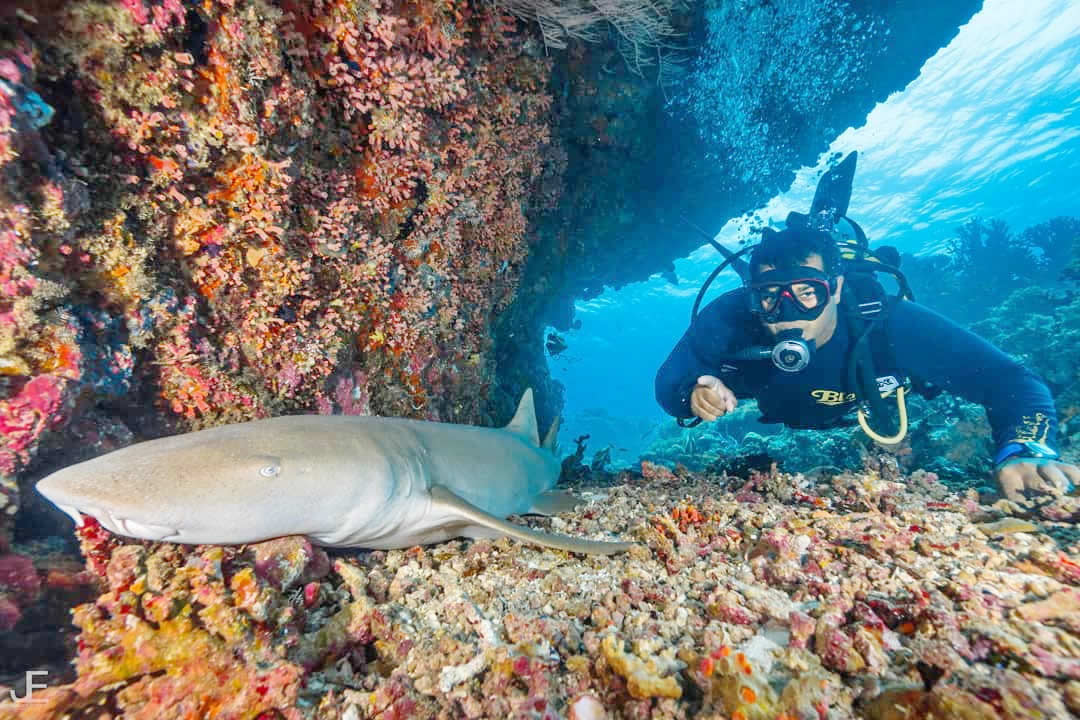
Nelivaru Haa
Nelivaru Haa offers a unique topography. The reef's top is at a depth of 14 meters and sinks to 30 meters. Star canyons are found in the middle, and protrusions covered with hard and soft corals are on the reef walls. Among caves and overhangs you will also find rays, large groupers, friendly bat fish, or schools of eastern sweetlips. This whole reef becomes a cleansing station during the Manta season, and while they dance with sweepers, you can watch them closely.
Christmas Tree
This very bizarrely shaped reef bears a likeness to an actual christmas tree with stunning reefs and marine life on each level starting with white tip reef sharks circling the bottom of the rock. It is a vibrant, brightly coloured reef, full of alluring critters, delicate nudibranches and other delightful micro life, making it an interesting spot for lovers of such and all kind of fish schools. Due to its relatively deep reef top though, it is rather a dive site for experienced divers than beginners. Also photographers will love it, thanks to the rich biodiversity and fantastic colours.
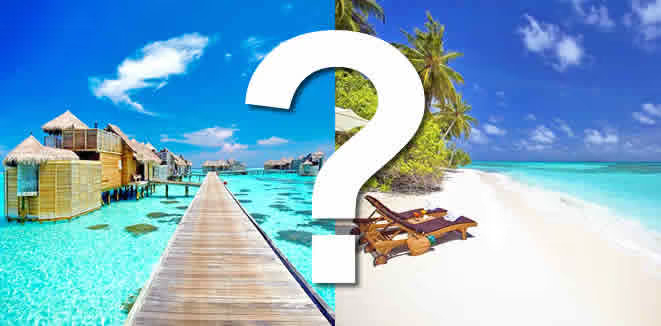
Beach or Water Villa?
Maldives - a name that became synonymous with honeymooners' paradise in the tourism world, has slowly revamped to cater to the needs of families visiting
Read More
Best Maldives Resort Offers & Packages
Find out more about the most unparalleled Maldives hotel deals and special rates, when Book Direct your next beach holiday
Read More
Maldives Hotel Reviews
Some of the best hotels and resorts in the Maldives are already included in this list, and the good part of them offers the best prices. We will constantly add new hotels
Read More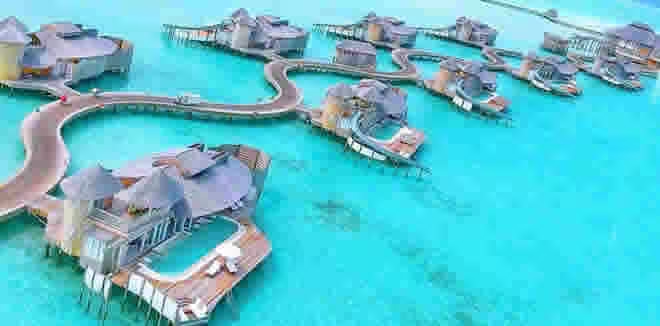
10 Exclusive Resorts in Maldives
The Maldives is paradise destination that should be on the bucket list of every discerning travelers. There's a special breed of hotels there that cater to the most tasteful of luxury travelers Read More
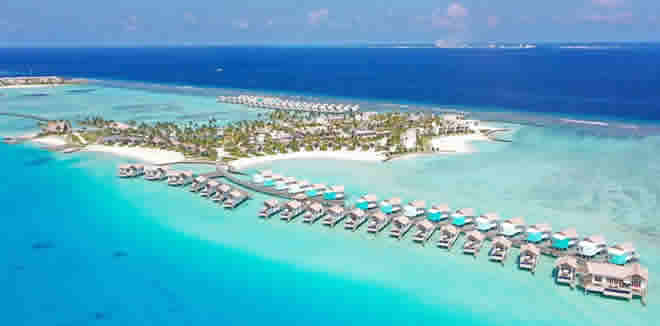
The Maldives’ Hottest Luxury Hotel Openings for 2023
Here are just 10 of the amazing new resorts in the Maldives that are set to welcome guests Read More
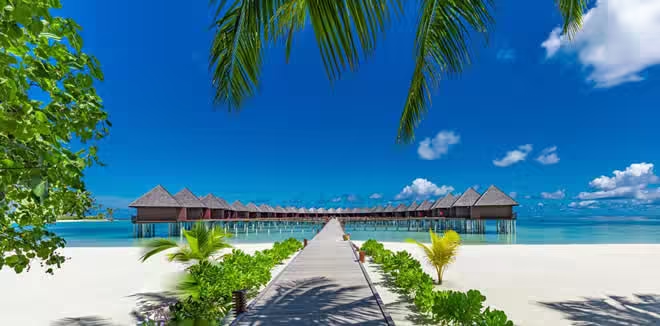
10 Most Affordable Water Villas
While it may never be cheap to visit thу Maldives, fortunately there are still some chic and relatively affordable overwater villas you can stay. Read more
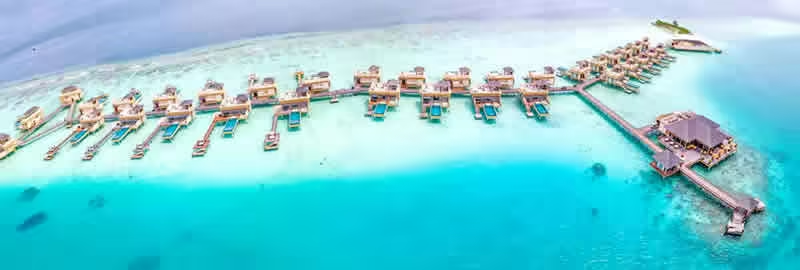
Maldives Luxury Guide
Here's the best of Maldives for luxury travellers. We've compiled the finest recommendations of places to stay, ranging from the most celebrated five-star resorts to luxurious private islands Read More
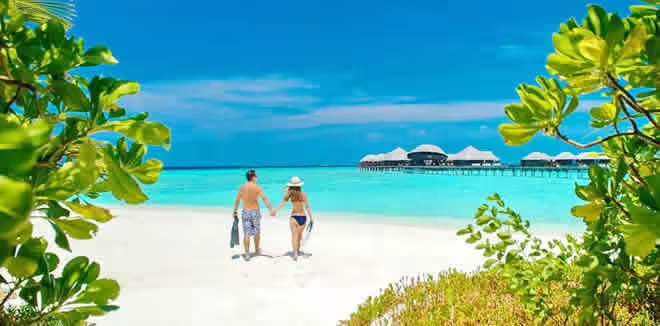
Maldives Romantic Guide
The ultimate ‘flop and drop' and honeymoon destination, the Maldives is the playground for the most amazing and finest utilization of each second of this extremely valuable and hopeful time with each other in tota Read More
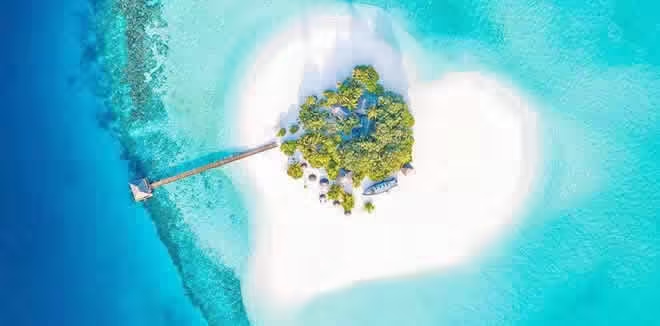
Maldives Budget Guide
Budget travellers choose Maldives as their destination of choice thanks to the variety of affordable stays Read More
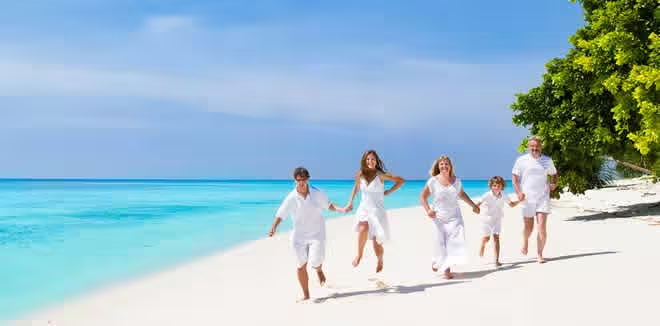
Maldives Family Guide
Maldives - a name that became synonymous with honeymooners' paradise in the tourism world, has slowly Read More

Maldives Diving Guide
The life of these paradise islands below the Indian Ocean's level is the main draw attracting thousands of divers Read More






